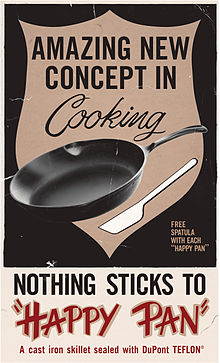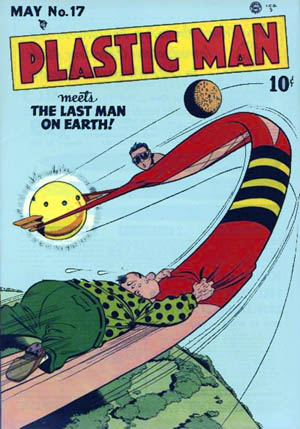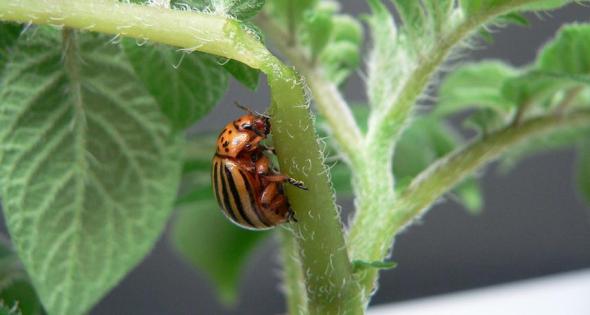The Plastic Man
Posted: August 30, 2015 Filed under: Chemicals | Tags: 3M, Agent Orange, Chemours, Dry Run Creek Landfill, DuPont, HDPE, LDPE, Manhattan Project, Mississippi River, Monsanto, Ohio River, Parkersburg WV, PCBs, PFOC, Plastics, PP, Sauget IL, Scotchgard, Solutia, Union Carbide, Zonyl Leave a commentSometimes it is embarrassing to be associated with an industry such as the Plastics industry. Even though what we do is environmentally friendly (keeping already existing plastics out of the landfill) and the plastics that we are dealing with HDPE, LDPE and PP “seem” relatively benign. However, it does not appear that we can trust any assurances from the chemical industry.
The Huffington Post has a damning article titled “Welcome to Beautiful Parkersburg, West Virginia” by Mariah Blake (see Information Resources at the end of this blog for a link). It is a saga yet to reach it’s conclusion. It is the story of the Washington Works, a plant in the DuPont family of companies and the Dry Run Creek landfill. It is the story of intentional deception on the part of DuPont. It is the story of how our modern day conveniences and ease in living are often obtained through the horrendous suffering of everyday people while the corporation – inherently different from a small business where someone actually cares and there is a “buck stops here” sense of responsibility – grows enormously wealthy and seeks to shed any liability for its actions in doing so.
DuPont assured the family on who’s farm it wanted to obtain a landfill that it would only dispose of non-toxic material like ash and scrap metal. It is easy for me to believe that with large corporations the left hand may not know what the right hand is doing. That the person making these assurances believed them. That whoever was responsible for supervising the transport and disposal of toxic substances in that landfill may have known nothing about such assurances. This is one of the more troubling aspects of corporations – no direct human responsibility as the corporation is a non-human entity – even though human beings are employed by it.
I know it has long been troubling for me to see the Teflon (or its more recent similarly structured derivatives) non-stick coating on my electric kettle and skillet flake off and I’ve not felt entirely reassured that it is safe and inert. There seems to be a good reason for my reluctance and distrust of the chemical industry in general. Thankfully, the last electric skillet I purchased has what appears to be a very durable surface that does not flake off, although it may subtly disintegrate imperceptibly over time. There is no way for me to be certain.
The histories of our various chemical giants like DuPont, 3M, Monsanto and Union Carbide just to name some of the more recognizable is littered with enough worrisome behavior as to justify a degree of bad karma for these businesses. After congressional hearings in 1934, DuPont (who had “supplied half of the world’s gunpowder and was expanding into bombs and poison gas. But it was drawing fire on the home front”) was advised that “the only way DuPont could escape the ‘atmosphere of plague’,” was to “transform its image from that of a purveyor of doomsday weaponry to a maker of peacetime products that benefited American society”.
Thus was born the “Better Things for Better Living … Through Chemistry” blueprint for the future. “Through the marvels of science, synthetic materials would free people from mundane tasks, allowing them to lead lives of leisure and ease.” DuPont’s legacy with Teflon traces itself back to its use in coating “the valves and seals of the Manhattan Project’s uranium enrichment equipment”. There was also created the idea of The Plastic Man in the late 1940s. “This fortunate being would enter a world of ‘color and bright shining surfaces, where childish hands find nothing to break … no crevices to harbour dirt or germs’. He would live his life ‘surrounded on every side by this tough, safe, clean material which human thought has created’.” There was even a comic book series of that name.
It can be frequently seen that large corporations create smaller entities to shirk financial responsibility. Prior to Sept. 1, 1997, a corporation that was then known as the “Monsanto Company” operated an “ag business”, a pharmaceuticals and nutrition business and a chemicals business. A company known as Solutia (currently a wholly-owned subsidiary of Eastman Chemical Company) now operates Monsanto’s former chemicals business. This past July 2015, “DuPont spun off its specialty chemicals division into a separate company called Chemours. The new enterprise will assume the liability for DuPont’s most polluted sites, including Washington Works—but it will only have one-quarter of DuPont’s revenue. Many people with cases pending against DuPont worry that it will use this arrangement to avoid paying damages.”
3M was long the supplier of C8 (perfluorooctanoic acid) to DuPont. C8 is a soaplike substance that gives Teflon its nonstick qualities. It is also found in thousands of household products, including carpeting, waterproof clothes, dental floss, kitty litter and cosmetics to name a few. Only in May 2000 did 3M annouce that it would phase out a close relative of C8 called perfluorooctane sulfonate, or PFOS used in Scotchgard fabric protector. Over the decades, DuPont has dumped huge quantities of Teflon waste into the ocean and into unlined pits along the Ohio River. When 3M began shutting down its C8 production, DuPont began manufacturing the chemical itself.
DuPont was involved in “another cover-up involving a grease-repellant chemical called Zonyl that is used in candy wrappers, pizza boxes and countless other food containers. DuPont had long insisted that the substance didn’t migrate into the food, but internal documents showed that it seeped off packaging at levels three times higher than what the FDA regarded as safe—and then broke down into C8”. C8 has been detected everywhere. In produce and beef in American grocery stores, polar bears in the Arctic, even children in the remote Faeroe Islands. One analysis of blood banks from around the world showed that nearly all of the blood contained C8.
Monsanto claims that they are a relatively new company even though they share the name and history of a company that was founded in 1901. Monsanto can claim credit for Saccharin used in 1902 by Coca-Cola. In 1929, Monsanto became the largest producer of polychlorinated biphenyls (PCBs), which were later banned in the 1970s. They remain to this day they in the water along Dead Creek in Sauget, IL (just across the Mississippi River from St Louis, MO where Monsanto is headquartered) where Monsanto had its plant for manufacturing PCBs. By 1938 Monsanto was largely involved in the plastics business. And from 1939 to 1945 Monsanto did a lot of research on enriching uranium for Manhattan project. During WWII, Monsanto was involved in the production of PCBs, DDT and chemical weapons. From 1961 to 1971 Monsanto was involved in the production of Agent Orange which was sprayed on the Vietnamese civilians and American troops during the Vietnam War. No wonder they wish to distance themselves from the “old” company !!
It can be disconcerting to learn that under the final version of the Toxic Substances Control Act of 1976 existing chemicals are all “grandfathered” in. Only five chemicals have ever been banned under the Toxic Substances Control Act. This means that only a handful of the 80,000-plus chemicals on the market have ever been tested for safety. Manufacturers are required to “inform” the EPA when they introduce new chemicals; however, no testing of such chemicals is required. This regulatory regime still exists today. “We are all, in effect, guinea pigs in a vast, haphazard chemistry experiment.” Since the Toxic Substances Control Act makes it extremely difficult for the EPA to ban chemicals, the best the EPA could do was negotiate with DuPont for a voluntary phase-out by 2015.
I am grateful that Missouri appears to be free of drinking water PFC contamination in the counties that have been tested for it. Our county has not been tested but it is reassuring to know that it is unlikely that we have any concerns related to this particular substance being in our drinking water though larger concerns remain due to C8 being already generally pervasive throughout modern society. You can check your location at the Environmental Working Groups interactive map – PFC Contamination.
~ Information Resources
“Welcome to Beautiful Parkersburg, West Virginia” by Mariah Blake posted at Huffington – http://highline.huffingtonpost.com/articles/en/welcome-to-beautiful-parkersburg/
PFC Contamination in Drinking Water, an interactive map, at the Environmental Working Group – http://static.ewg.org/reports/2015/pfoa_drinking_water/interactive_map/index.html
Monsanto Company History – http://www.monsanto.com/whoweare/pages/monsanto-history.aspx
“Dark History of Monsanto” posted at Seattle Organic Restaurants – http://www.seattleorganicrestaurants.com/vegan-whole-foods/dark-history-monsanto/
“Corporate Relationships Among Monsanto Company” – http://www.monsanto.com/whoweare/pages/monsanto-relationships-pfizer-solutia.aspx
***
Blog author ~ Deborah Hart Yemm is co-founder of
Yemm & Hart, a green materials producer
***
Cut & Paste DNA
Posted: August 2, 2015 Filed under: Designing for the Future | Tags: Agronomists, Archaea, Beetle RNA, Bioengineers, Biohazard, Crispr, Crispr-Cas9, DNA, Emmanuelle Charpentier, Enzymes, Ethics, Genomes, GMOs, Monsanto, Potato Plastids, Research, RNA, Safety, Sci-Fi, Science News, Streptococcus pyogenes, TALENs, Wired Magazine Leave a commentThe cover of the August 2015 issue of Wired magazine declares – “No hunger. No pollution. No disease. And the end of life as we know it. The Genesis Engine. Editing DNA is now as easy as cut and paste. Welcome to the post-natural world.”
In the early months of this year, I was on a Clementine kick. I loved the bite sized, easy to peel citrus fruit but alas the season ended and so I’ve started eating Red Grapefruit about 3-4 times a week to get my citrus fix. No idea why I crave citrus fruits these days but I honor the urge because it is at least a healthy one.
Imagine my surprise to discover in the Wired article that scientists back in the 1930s began playing around with intentional mutations by irradiating seeds and insect eggs with xrays to scatter the genomes around like shrapnel. Hundreds of undesirable traits were discarded but one that has lasted was the creation of Red Grapefruit. Another was the barley used in brewing most modern beers.
Since then a lot of work has been accomplished on genomes. As recently as 2002, molecular biologists had learned how to delete or replace specific genes using enzymes called zinc-finger nucleases. The next step from that was the technique that used enzymes known as TALENs. But these procedures were expensive and complicated.
Do you know what a palindrome is ? This is a series that is the same back to front and front to back. Some microbiologists that were sequencing the genomes of ancient bacteria and microbes called Archaea (actually the descendants of the first life on Earth !!) noticed recurring segments but didn’t know what they do. They did think they were a bit weird though and named these clusters Crispr.
A lot of people worry about GMOs and a lot of people hate Monsanto for that. And yet, according to the Wired article, scientists do care about the unintended consequences of the genies they are unleashing from their laboratories. Back in 1975, 140 scientists gathered at Asilomar in California in view of the inspiring landscape of the Monterey Penisula on the Pacific Ocean to consider the implications of “recombinant DNA”. That is decrypting and reordering genes to manipulate the source code of life.
The outcome of that meeting was a set of guidelines about how to isolate dangerous experiments and a determination that cloning and messing around with dangerous pathogens should be off-limits but they really couldn’t see the idea of modifying the human “germ line” (which would pass changes on to subsequent generations) as a realistic worry in the mid-1970s.
Fast forward to 2015 and once again researchers met at a conference, this time in Napa Valley, to talk about the implications of genome engineering. The gene editing technique known as Crispr-Cas9 was ALREADY readily accessible by everyone at this conference. Turns out that Crispr-Cas9 makes it easy, cheap and fast to move genes around – ANY genes – in any living thing from bacteria to human beings.
And researchers had already been utilizing the 3 year old technique to reverse mutations that cause blindness, stop cancer cells from multiplying or make cells impervious to the virus that causes AIDS. Agronomists had rendered wheat invulnerable to powdery mildew and were looking for ways to better meet the food needs of the 9 million people inhabiting this planet. Bioengineers have used Crispr to alter the DNA of yeast so that it consumes plant matter to create ethanol. And pharmaceutical companies have spun off Crispr R&D branches.
By now, you have probably figured out that this technique is revolutionary and that it is perilous !! Crispr could allow genetics researchers to conjure up all the nightmare possibilities that keep some people awake at night – designer babies, invasive mutants, species-specific bioweapons and a dozen other apocalyptic sci-fi imaginings.
I found the discussion about RNA in the Wired article interesting. In looking at bacteria, the researchers started wondering if Crispr was a primordial immune system. RNA is single-stranded genetic material whereas DNA is double-stranded. “Guide RNA” has been created by combining two strands of RNA into one fragment (and it can be made from whatever genetic “letters” they want and not just from viruses but well – they believe – from just about anything).
A microbiologist in Sweden named Emmanuelle Charpentier was working with Streptococcus pyogenes (yes, in a biohazard chamber alright !!). That is where she found the Cas9 mentioned previously. Cripr makes two short strands of RNA and Cas9 latches onto them. When the Crispr-Cas9 arrives at its destination, Cas9 does something almost magical – it changes shape, grasping the DNA and slicing it with a precise molecular scalpel.
The combination of Guide RNA and Cas9 has created a programmable machine for DNA cutting (hence the title of this blog). The stakes are high in the on-going patent battle (more than one party claims they were the “first”). The licensing of the patent could be worth billions in royalties.
The gene-editing possibilities of Crispr-Cas9 are limited only by scientific creativity and ethics. And there are lots of unknowns still on the frontier. Crispr could be used to treat some debilitating disorder in the womb and it might also be used for a less significant application like skin wrinkling in aging. The medical research community simply hasn’t had enough time to seriously discuss the ethics and safety even as the utilization of the technique rushes forward.
The April 4, 2015 issue of Science News describes the use of Beetle RNA to engineer plants by putting it in their leaves. These genes were inserted in plant cells called plastids. An example of one type of plastid is a chloroplast which performs photosynthesis. So the plant was laced with double-stranded beetle RNA so that if eaten by that beetle, it disabled certain genes and caused their guts to break down. The adult beetles stopped eating and their larvae that feasted on the plants were dead. Researchers believe that the technique is safe because the plastids have their own DNA that doesn’t make it into pollen and so won’t spread the beetle genes from the engineered crops in pollinating other plants.
I can’t claim to feel warm and fuzzy about it. I can only trust that they really do know what they are doing when they use their god-like powers to engineer new crops. Just like with Artificial Intelligence and the singularity that is looming ahead for us, I don’t think there is any stopping the “forward progress” ? of science in the realm of genomes.
~ Information Resources
“Easy DNA Editing Will Remake the World. Buckle Up.” by Amy Maxmen in Wired Magazine – http://www.wired.com/2015/07/crispr-dna-editing-2/
Red Grapefruit photo courtesy of wikiHow “How to Eat a Grapefruit” – http://www.wikihow.com/Eat-a-Grapefruit
Archaea graphic from Microbe Hunter by Syazwani Aina posted May 9, 2015 – http://syazwaniainanana.blogspot.com/2015/05/archaea.html
Designer Babies image from Student Collaboration for the 21st Century – “The idea of progress” by Pierre-Yves Reignoux posted Nov 6, 2013 – http://studentcollaboration21.blogspot.com/2013/11/the-idea-of-progress-pierre-yves.html
“Beetle RNA makes crops a noxious meal” by Kate Baggaley posted Feb 26, 2015 Science News – https://www.sciencenews.org/article/beetle-rna-makes-crops-noxious-meal
***
Blog author ~ Deborah Hart Yemm is co-founder of
Yemm & Hart, a green materials producer
***









Recent Comments